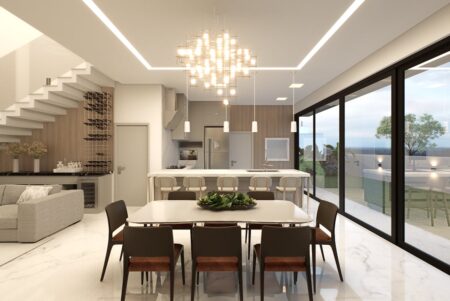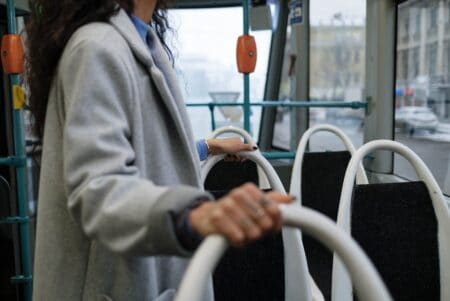When summer temperatures soar, your air conditioning unit is the unsung hero of comfort. But what happens when it suddenly isn’t cooling effectively?
Finding yourself in a sweltering home can be frustrating. Let’s explore some common reasons for inadequate cooling and potential fixes.
Dirty Air Filters
One of the primary reasons an AC may fail to cool adequately is a dirty air filter. Air filters trap dust, dirt, and allergens, preventing them from circulating in your home. Over time, these filters can become clogged, restricting airflow.
This blockage can cause your system to work harder, leading to higher energy bills and reduced cooling efficiency.
To address this, check your air filter every month, especially during peak usage times. If it looks dirty or clogged, replace it with a clean one.
Some units have reusable filters that can be cleaned rather than replaced.
Refrigerant Issues
Refrigerant is the lifeblood of any cooling system. If your air conditioner is low on refrigerant, it won’t be able to cool your home effectively.
A leak in the system can cause this refrigerant loss, which not only hampers performance but can also damage your unit over time.
Detecting a refrigerant leak typically requires a professional. They can check the system’s pressure and recharge it if necessary.
If there’s a leak, it needs to be repaired before adding more refrigerant.
Thermostat Troubles
Your thermostat acts as the brain of your air conditioning system. If it’s malfunctioning, your AC might not receive the correct signals to cool your space.
Sometimes, the issue may be as simple as incorrect settings or dead batteries. Other times, it might be a more complex electrical problem.
First, check your thermostat settings to ensure it’s set to “cool” and the desired temperature.
If that’s not the issue, consider replacing the batteries or upgrading to a programmable or smart thermostat for enhanced efficiency.
Blocked Condenser Unit
The outdoor condenser unit is essential for dissipating heat. When it’s covered in debris like leaves, dirt, or overgrown vegetation, it can’t release heat properly, which puts strain on your entire system and leads to poor cooling performance.
If you’ve noticed your AC struggling lately, it might be time to fix your outside AC unit to restore its efficiency and prevent further issues.
Make a habit of inspecting the condenser unit regularly. Clear away any debris and ensure it has at least two feet of clearance around it.
This simple maintenance task can significantly improve your AC’s performance.
Duct Leaks
A hidden issue in many homes is leaking ductwork. If air is escaping through cracks or holes in the ducts, cooled air may never reach your living space.
This can lead to uneven temperatures and increased energy costs.
Conducting a visual inspection of the ducts, especially in attics or crawl spaces, can help spot leaks. Sealing these leaks with duct tape or mastic sealant can improve airflow and efficiency.
For extensive issues, consider hiring a professional for a complete duct inspection.
Insufficient Insulation

Insulation plays a key role in maintaining indoor temperatures. If your home is poorly insulated, cool air can escape, leading to a constant battle against the heat outside.
This not only affects comfort but can also result in skyrocketing energy bills.
Inspect your home’s insulation, particularly in the attic. Adding insulation or replacing old, ineffective insulation can help keep cool air inside.
Investing in good insulation can save you money and keep your space comfortable.
AC Size Matters
Every home has specific cooling needs based on its size, layout, and climate. An air conditioning unit that’s too small for your space will struggle to keep up with demand.
Conversely, an oversized unit can cycle on and off too frequently, leading to uneven cooling and humidity issues.
If you suspect your AC is the wrong size, consult with a professional. They can perform a load calculation to determine the appropriate size for your home and recommend suitable replacements if necessary.
Improper Installation
Even the best air conditioning units can underperform if not installed correctly. Issues such as poor placement of the indoor or outdoor unit, improper ductwork, or inadequate refrigerant charge can all lead to cooling problems.
If you suspect installation issues, it may be wise to reach out to a professional technician. A qualified expert can assess the installation and make necessary adjustments to improve performance.
Age of the Unit
Air conditioning units have a lifespan of about 10 to 15 years. Over time, wear and tear can diminish performance, leading to inadequate cooling.
An aging unit might also struggle with efficiency, resulting in higher energy bills.
If your AC unit is nearing or past its expected lifespan, consider exploring replacement options. Newer models are often more energy-efficient and can provide improved cooling capabilities.
Humidity Levels
Humidity can have a significant impact on comfort and perceived temperature. A well-functioning air conditioning unit should help control humidity levels, but if it’s not cooling adequately, you might feel sticky and uncomfortable.
To address high humidity, consider investing in a dehumidifier. This appliance can work alongside your AC to enhance comfort, especially in particularly humid climates.
Electrical Issues
Sometimes, the culprit behind insufficient cooling is electrical. Faulty wiring, blown fuses, or tripped breakers can interrupt your AC’s operation.
If your system is cutting in and out or not starting at all, there might be an underlying electrical issue.
If you suspect electrical problems, it’s best to consult a licensed electrician or HVAC technician. Working with electricity can be dangerous, and it’s essential to ensure safety while addressing the issue.
Professional Maintenance
Regular maintenance is key to keeping your air conditioning system running smoothly. A professional technician can perform routine checks, clean the system, and address any potential issues before they escalate.
Scheduling seasonal maintenance can help prolong your unit’s lifespan and improve its efficiency. Aim for a tune-up at least once a year, ideally before the cooling season kicks into high gear.
DIY Troubleshooting Tips
Before calling for help, there are some simple steps you can take to troubleshoot your AC. Start by checking the thermostat settings and ensuring all vents are open and unblocked.
Inspect the outdoor unit for any debris and clear it away.
Ensure that your AC is receiving power by checking the circuit breaker. Sometimes, it can be as simple as resetting a tripped breaker.
If your attempts don’t yield results, it might be time to call in a professional.




